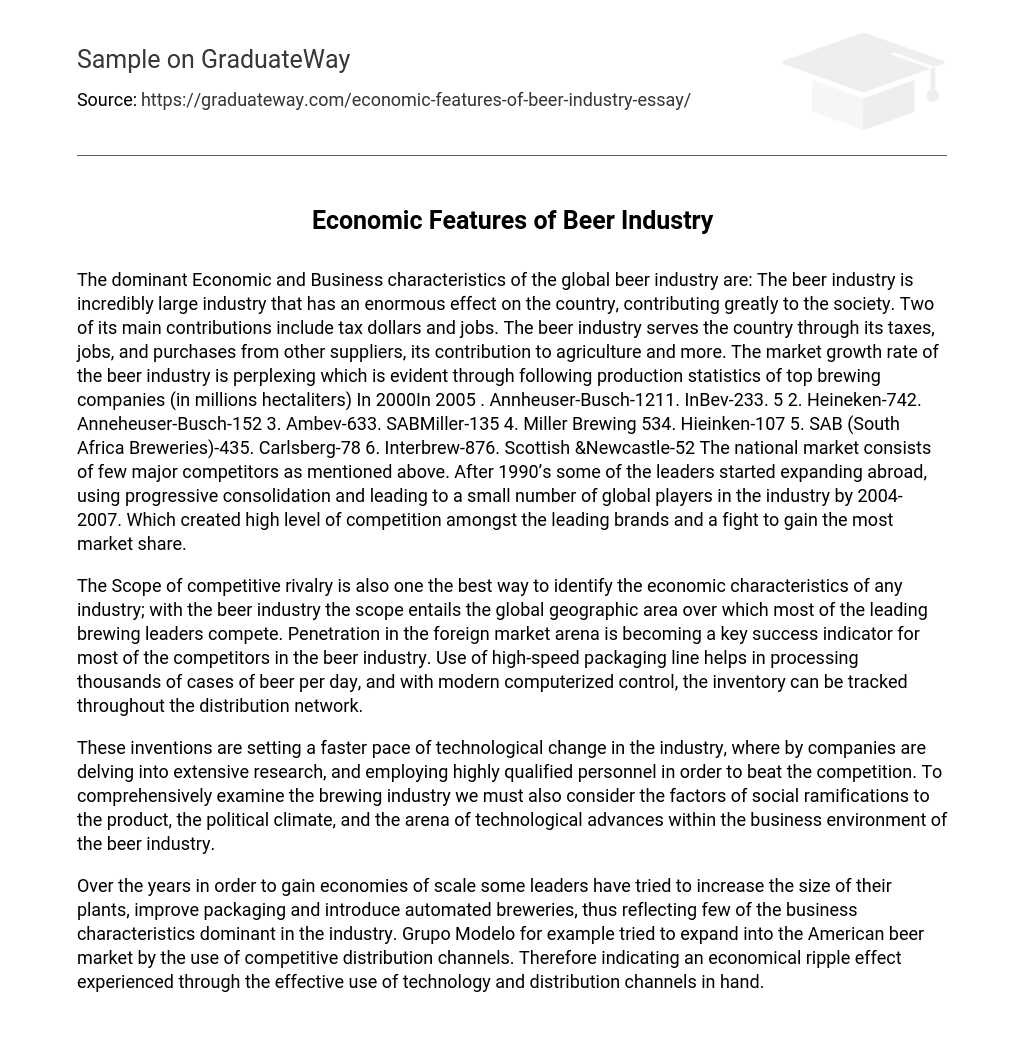The dominant Economic and Business characteristics of the global beer industry are: The beer industry is incredibly large industry that has an enormous effect on the country, contributing greatly to the society. Two of its main contributions include tax dollars and jobs. The beer industry serves the country through its taxes, jobs, and purchases from other suppliers, its contribution to agriculture and more. The market growth rate of the beer industry is perplexing which is evident through following production statistics of top brewing companies (in millions hectaliters) In 2000In 2005 . Annheuser-Busch-1211. InBev-233. 5 2. Heineken-742. Anneheuser-Busch-152 3. Ambev-633. SABMiller-135 4. Miller Brewing 534. Hieinken-107 5. SAB (South Africa Breweries)-435. Carlsberg-78 6. Interbrew-876. Scottish &Newcastle-52 The national market consists of few major competitors as mentioned above. After 1990’s some of the leaders started expanding abroad, using progressive consolidation and leading to a small number of global players in the industry by 2004-2007. Which created high level of competition amongst the leading brands and a fight to gain the most market share.
The Scope of competitive rivalry is also one the best way to identify the economic characteristics of any industry; with the beer industry the scope entails the global geographic area over which most of the leading brewing leaders compete. Penetration in the foreign market arena is becoming a key success indicator for most of the competitors in the beer industry. Use of high-speed packaging line helps in processing thousands of cases of beer per day, and with modern computerized control, the inventory can be tracked throughout the distribution network.
These inventions are setting a faster pace of technological change in the industry, where by companies are delving into extensive research, and employing highly qualified personnel in order to beat the competition. To comprehensively examine the brewing industry we must also consider the factors of social ramifications to the product, the political climate, and the arena of technological advances within the business environment of the beer industry.
Over the years in order to gain economies of scale some leaders have tried to increase the size of their plants, improve packaging and introduce automated breweries, thus reflecting few of the business characteristics dominant in the industry. Grupo Modelo for example tried to expand into the American beer market by the use of competitive distribution channels. Therefore indicating an economical ripple effect experienced through the effective use of technology and distribution channels in hand.





